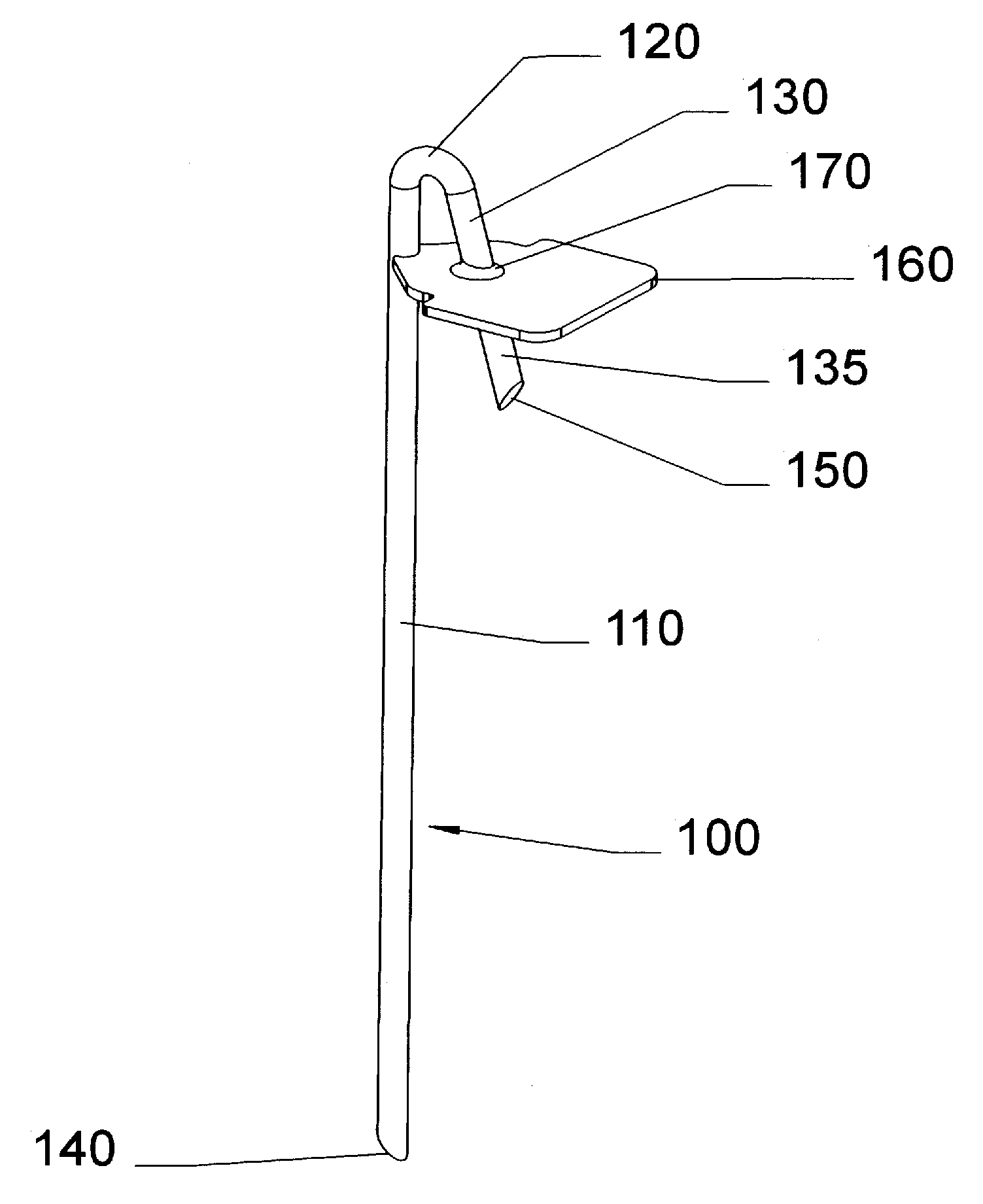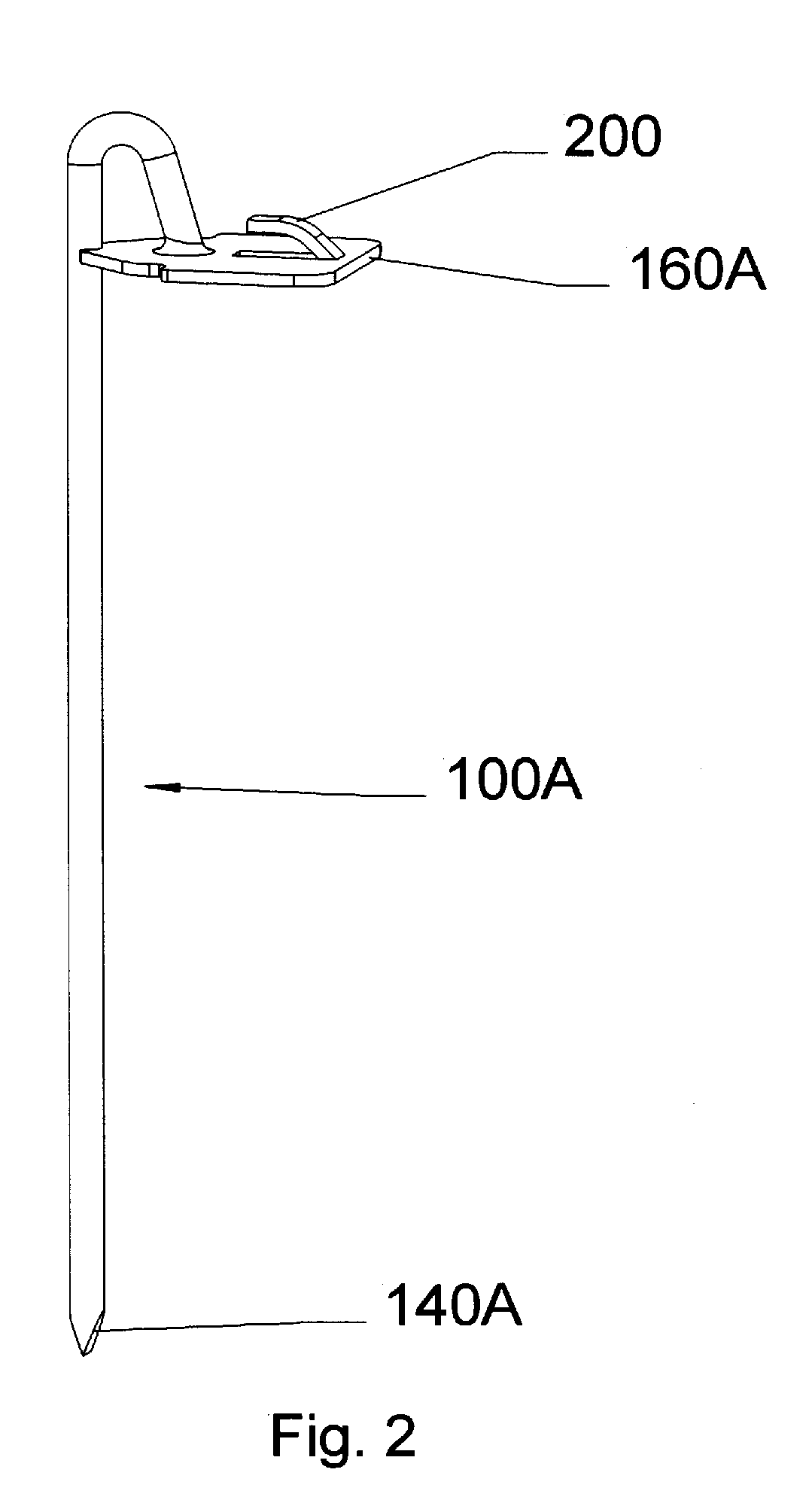Ground anchors with compression plates
a technology of compression plates and anchors, which is applied in the direction of anchors/canopies, waterborne vessels, vessel parts, etc., can solve the problems of short length, ineffective such as those sold under, and insufficient sand holding power of most anchors, so as to reduce the tendency of anchors, and limit the top of the anchor movement
- Summary
- Abstract
- Description
- Claims
- Application Information
AI Technical Summary
Benefits of technology
Problems solved by technology
Method used
Image
Examples
embodiment
DESCRIPTION—22D FIG. 33
[0155]FIG. 33 shows a single tine embodiment suitable for use as a shore or sand anchor. This embodiment comprises a single tine 3300 with a sharpened tip 140C at the bottom end and a hand or foot plate 3320 at the top end. A plate 160I is attached at the top end of tine 3300, beneath plate 3320. A brace 3340 with a hole 3310 is secured between plate 160I and plate 3320 by a joint or fillet 170B. This embodiment is between 25 cm and 50 cm in length, although any size can be used, depending on the load to be secured to the ground. Plate 3320 is typically between 4 cm and 8 cm in diameter, although other sizes can be used. The cross-section of tine 3300 can be elliptical, round, square, star-shaped, pentagonal, and the like to reduce twisting in the ground during and after installation.
OPERATION—22D EMBODIMENT—FIG. 33
[0156]Tine 3300 is driven into the ground by pressure or blows applied to plate 3320. When fully installed, plate 160I rests firmly on the ground. ...
PUM
 Login to View More
Login to View More Abstract
Description
Claims
Application Information
 Login to View More
Login to View More - R&D
- Intellectual Property
- Life Sciences
- Materials
- Tech Scout
- Unparalleled Data Quality
- Higher Quality Content
- 60% Fewer Hallucinations
Browse by: Latest US Patents, China's latest patents, Technical Efficacy Thesaurus, Application Domain, Technology Topic, Popular Technical Reports.
© 2025 PatSnap. All rights reserved.Legal|Privacy policy|Modern Slavery Act Transparency Statement|Sitemap|About US| Contact US: help@patsnap.com



